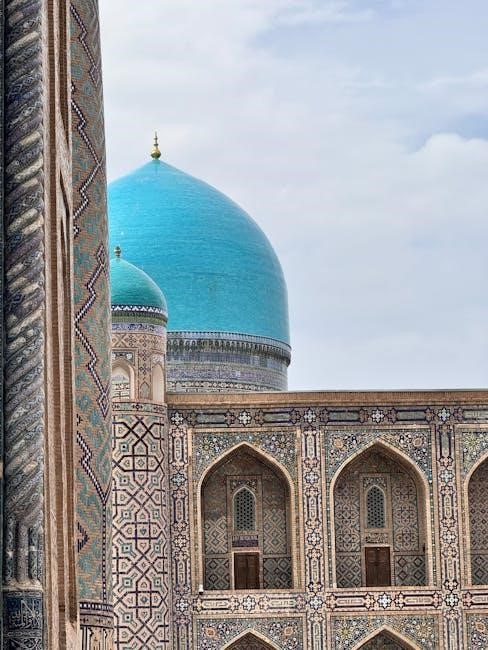The Hunger Games Book 1⁚ PDF Availability
Finding a legitimate PDF of “The Hunger Games” can be challenging. Many websites offer downloads, but caution is advised due to potential copyright infringement and malware risks. Reliable sources include online libraries and authorized ebook retailers. Always prioritize legal access to avoid problems.
Where to Find Digital Copies
Securing a digital copy of “The Hunger Games” legally involves exploring various avenues. Reputable online bookstores like Amazon Kindle, Barnes & Noble Nook, Google Play Books, and Apple Books offer the ebook in various formats, including PDF (sometimes requiring specific software). These platforms ensure a safe and authorized download, eliminating the risk of malware or copyright violations. Public libraries often provide ebook lending services through platforms such as Overdrive or Libby, allowing you to borrow the book digitally for a limited time. These libraries frequently offer a wide selection of titles, including popular young adult novels. Always verify the source’s legitimacy before downloading to avoid encountering potentially harmful files or illegal content. Remember to respect copyright laws; only download from trusted and authorized sources.
Online Retailers and Libraries
Numerous online retailers offer digital copies of “The Hunger Games,” providing convenient access to the novel. Major players such as Amazon Kindle, Barnes & Noble Nook, Kobo, Google Play Books, and Apple Books are reliable sources for purchasing authorized ebooks. These platforms usually offer the book in various formats, though PDF may not always be directly available. Additionally, many public libraries participate in ebook lending programs, partnering with services like Overdrive and Libby. These platforms provide access to a vast digital collection, often including “The Hunger Games.” Library memberships typically grant access to borrow ebooks for a specified duration, offering a cost-effective alternative to purchasing. Always check your local library’s website or app to see if they offer the book. Remember to return borrowed ebooks promptly to ensure others can access them.
Legitimate Download Sources
While a direct PDF download of “The Hunger Games” from the author or publisher might not always be readily available, several legitimate avenues exist for obtaining digital copies. Reputable ebook retailers like Amazon Kindle, Barnes & Noble Nook, Kobo, Apple Books, and Google Play Books offer authorized ebooks that can be downloaded to various devices. These sources ensure you’re receiving a genuine copy and supporting the author. Many public libraries also provide access to digital books through partnerships with Overdrive and Libby. These platforms usually offer a selection of ebook formats, although PDF may not be universally supported. Checking the specific availability on these platforms is recommended. Additionally, some websites may offer free ebooks, but always verify the legitimacy of the source to avoid copyright infringement or malware risks. Prioritize established retailers and library services for safe and reliable downloads.
Potential Risks of Illegal Downloads
Downloading “The Hunger Games” from unauthorized sources presents several significant risks. Firstly, illegal downloads are a violation of copyright laws, potentially leading to legal repercussions for users. Secondly, many unofficial websites offering free downloads often bundle malware or viruses with the ebook files. Downloading such files can expose your device to harmful software that could steal personal data, damage your system, or even lead to identity theft. Furthermore, the quality of illegally obtained ebooks can be significantly inferior. They might contain formatting errors, missing pages, or corrupted text, diminishing the reading experience. Finally, supporting illegal downloads deprives authors and publishers of rightfully earned revenue, discouraging the creation and distribution of future works. Choosing legitimate sources guarantees a safe, legal, and high-quality reading experience while supporting the creative industry.
The Hunger Games Series Overview
Suzanne Collins’s Hunger Games trilogy follows Katniss Everdeen’s fight for survival in a dystopian Panem. The series explores themes of oppression, rebellion, and the strength of the human spirit.
The Plot of the First Book
In the dystopian nation of Panem, sixteen-year-old Katniss Everdeen volunteers as tribute to take her younger sister Prim’s place in the annual Hunger Games, a televised spectacle where children fight to the death. Paired with Peeta Mellark, Katniss navigates the deadly arena, facing not only other tributes but also the manipulative gamemakers; She utilizes her hunting skills and resourcefulness to survive, forming unexpected alliances and battling starvation, dehydration, and treacherous terrain. Along the way, Katniss’s defiance of the Capitol’s authority and her burgeoning relationship with Peeta challenge the very foundation of Panem’s oppressive system. The novel culminates in a shocking act of rebellion that alters the course of the Games and sets the stage for the subsequent installments in the trilogy, leaving readers breathlessly anticipating the next chapter in Katniss’s courageous journey. The survival of Katniss and Peeta and the unexpected turn of events sets the stage for the events of the following books.
Key Characters and Their Roles
Katniss Everdeen, the protagonist, is a skilled hunter who volunteers as tribute to save her sister. Peeta Mellark, Katniss’s fellow tribute, is initially presented as kind and compassionate, but his character evolves throughout the story. Gale Hawthorne, Katniss’s close friend and hunting partner, represents a significant emotional connection outside the arena. Haymitch Abernathy, a former victor of the Hunger Games, acts as Katniss and Peeta’s mentor, providing crucial advice. President Snow, the ruthless leader of Panem, embodies the oppressive power of the Capitol. Effie Trinket, the escort assigned to District 12, provides a contrast to the Capitol’s harshness. Primrose Everdeen, Katniss’s younger sister, serves as a powerful motivator for Katniss’s actions. These characters, each with their own motivations and complexities, drive the narrative forward and explore themes of survival, love, and rebellion within the harsh context of the Hunger Games.
The Dystopian Setting of Panem
Suzanne Collins masterfully crafts the dystopian nation of Panem, a post-apocalyptic North America. The Capitol, a technologically advanced and opulent city, reigns supreme, controlling twelve impoverished districts through fear and oppression. Each district specializes in a specific industry, highlighting the stark social and economic inequality. The districts are characterized by poverty, scarcity, and environmental degradation, a stark contrast to the Capitol’s opulence. The Hunger Games themselves are a brutal annual spectacle, forcing children to fight to the death as a reminder of the Capitol’s power and to suppress rebellion. This oppressive system, where survival is a daily struggle for the majority, forms the backdrop against which Katniss’s journey unfolds, showcasing the consequences of unchecked power and societal injustice. The stark contrast between the Capitol’s wealth and the districts’ poverty creates a powerful setting for the story.
Exploring the Themes
The Hunger Games delves into profound themes⁚ survival against overwhelming odds, the fight against oppression, and the power of individual defiance in the face of a totalitarian regime.
Survival and Resilience
The brutal Hunger Games themselves serve as a central exploration of survival. Katniss Everdeen’s resourcefulness, honed by years of foraging in the impoverished District 12, becomes crucial to her survival. She displays remarkable adaptability and quick thinking, learning to use her surroundings and her skills to outwit both the Gamemakers and her fellow tributes. Her resilience isn’t just physical; it’s deeply emotional. She endures immense trauma and loss, yet her determination to protect her family and her unwavering spirit propel her forward, demonstrating the strength of the human will to survive even the most horrifying circumstances. This resilience is further emphasized by her compassion; even amidst the savagery of the Games, Katniss shows kindness and empathy towards others, highlighting her moral compass amidst the brutality. The novel underscores the power of human spirit to overcome seemingly insurmountable challenges and the importance of resourcefulness and adaptability in the face of adversity. The struggle for survival becomes a potent symbol of the larger fight against oppression and injustice within Panem.
Social Inequality and Oppression
The Hunger Games vividly portrays a starkly unequal society, divided into the opulent Capitol and twelve impoverished districts. The Capitol’s lavish lifestyle stands in stark contrast to the grinding poverty and starvation endured by the districts’ inhabitants. This inequality is enforced through brutal oppression, symbolized by the annual Hunger Games themselves – a televised spectacle where children are forced to fight to the death. The Games serve not only as entertainment for the Capitol but also as a potent tool to suppress any potential rebellion in the districts. The Capitol’s control extends beyond the Games; it manipulates resources, information, and even the districts’ very identities, ensuring its continued dominance. The stark contrast between the Capitol’s opulence and the districts’ destitution underlines the systemic injustice inherent in Panem’s structure. Katniss’s experiences highlight the everyday struggles faced by the oppressed, their resilience, and their quiet acts of defiance against a system designed to keep them subservient.
The Power of Rebellion
In Suzanne Collins’ “The Hunger Games,” the seemingly insignificant act of defiance by Katniss and Peeta—their refusal to directly fight each other—ignites a spark of rebellion within the oppressed districts. Their actions, born from survival and love, inadvertently challenge the very foundation of the Capitol’s power. The simple gesture of two tributes choosing death over killing each other becomes a symbol of resistance, inspiring hope and defiance among the downtrodden. This subtle rebellion, initially unnoticed by the Capitol’s overseers, gradually spreads, fueled by the growing discontent within the districts. The impact of their actions ripples outwards, demonstrating how even seemingly small acts of resistance can disrupt oppressive systems. The novel showcases how the human spirit, driven by compassion and the will to survive, can overcome seemingly insurmountable odds and challenge the seemingly unbreakable power structures. Katniss’s actions, initially motivated by survival and love for her sister, become a catalyst for a larger movement, hinting at the potential for broader change.
Author and Background
Suzanne Collins, the author of “The Hunger Games,” is a renowned American novelist known for her captivating dystopian fiction. Her writing style blends elements of science fiction, adventure, and social commentary.
Suzanne Collins’ Writing Style
Suzanne Collins’ writing style in “The Hunger Games” is characterized by its compelling narrative voice, seamlessly blending descriptive passages with fast-paced action sequences. Her prose is accessible yet evocative, painting vivid pictures of the dystopian world of Panem while delving into the complex emotional landscapes of her characters. Collins masterfully uses a first-person perspective, allowing readers intimate access to Katniss Everdeen’s thoughts and feelings, creating a strong emotional connection. The narrative is punctuated by moments of intense suspense and vulnerability, reflecting the harsh realities of survival in a brutal environment. Her ability to craft believable characters facing extraordinary circumstances is a hallmark of her work, engaging readers and leaving a lasting impact.
Furthermore, Collins’ precise use of language contributes to the overall impact of the story. She uses figurative language sparingly but effectively, crafting imagery that sticks with the reader long after they finish the book. The simplicity of her language belies the complexity of themes explored in the novel, allowing readers of all ages and backgrounds to connect with the story. Her ability to weave together action, suspense, and character development seamlessly makes her writing both engaging and thought-provoking. The blend of descriptive detail and character-driven narrative creates a compelling reading experience.
Impact and Cultural Significance
The Hunger Games, since its release, has had a profound impact on young adult literature and popular culture. Its exploration of themes such as oppression, rebellion, and survival resonated deeply with readers, sparking widespread discussions about social injustice and the power of individual agency. The series propelled dystopian fiction into the mainstream, influencing countless subsequent novels and films. Collins’ creation of a compelling female protagonist, Katniss Everdeen, who defies societal expectations and fights for survival, became a powerful symbol for young women.
The books’ success translated into a highly successful film franchise, further solidifying their place in popular culture. The Hunger Games’ influence extends beyond literature and cinema; its themes have been incorporated into discussions about political systems, social inequality, and the role of media in shaping public perception. The series’ widespread popularity is a testament to its ability to tackle complex issues in an engaging and accessible manner, leaving a lasting impact on readers and viewers alike. The Hunger Games continues to inspire conversations about social justice and the enduring power of human resilience.
Critical Reception and Analysis
Critical reception of “The Hunger Games” has been largely positive, praising its compelling narrative, complex characters, and thought-provoking themes. Reviewers often highlight Suzanne Collins’ skillful blend of dystopian fiction with elements of adventure and romance, creating a captivating reading experience for young adults and adults alike. The novel’s exploration of societal inequalities, the manipulation of media, and the resilience of the human spirit has garnered significant critical acclaim. Many analyses focus on Katniss Everdeen as a powerful female character who challenges traditional gender roles and embodies both strength and vulnerability.
However, some critiques have addressed the novel’s occasionally simplistic portrayal of complex political and social issues. Discussions also exist regarding the book’s depiction of violence and its potential impact on young readers. Despite these varying viewpoints, “The Hunger Games” remains a significant work of young adult literature, provoking critical discourse and continuing to inspire interpretations across multiple academic disciplines and cultural contexts. Its enduring popularity and critical engagement solidify its place in the literary canon.



